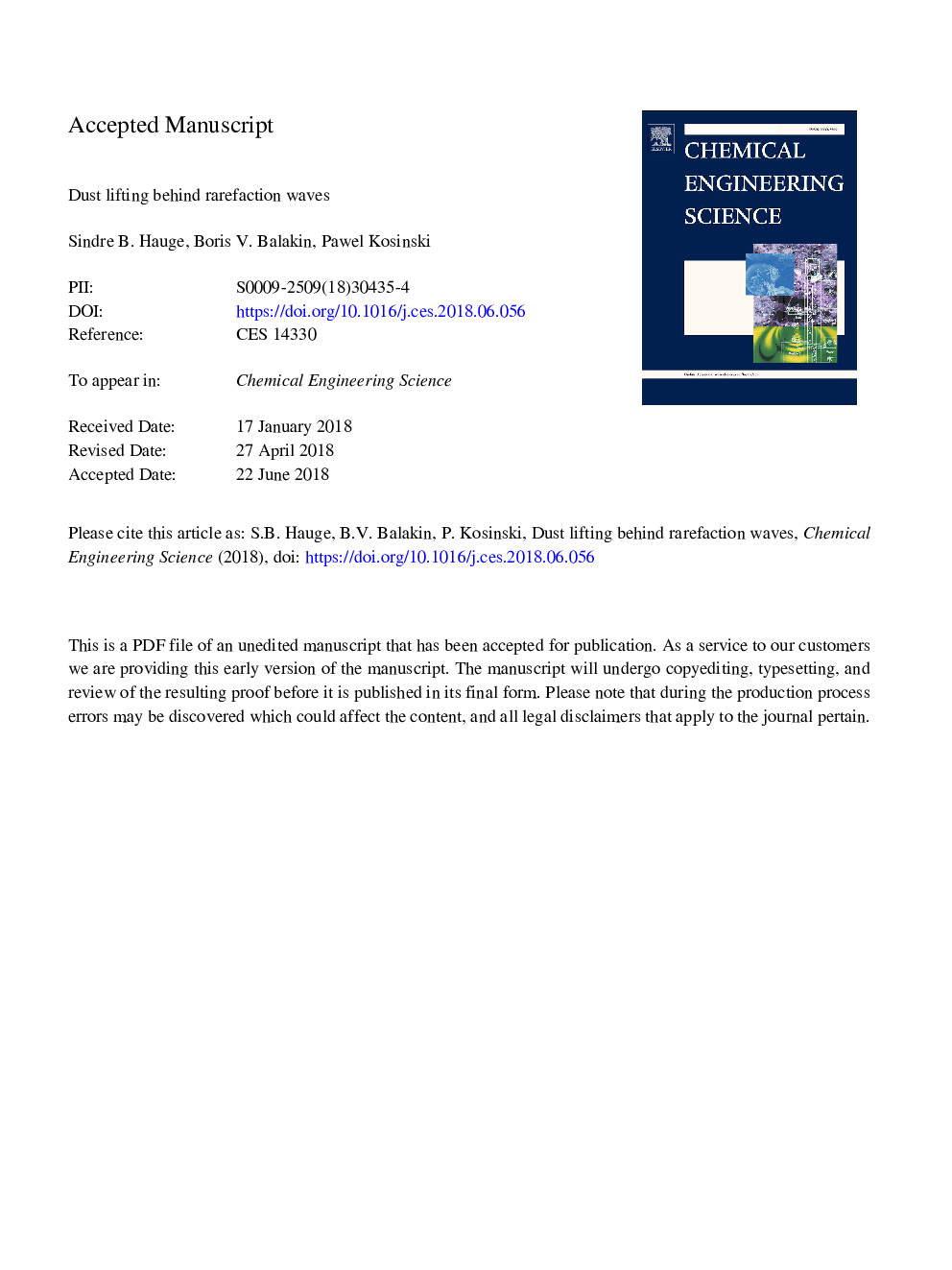| Article ID | Journal | Published Year | Pages | File Type |
|---|---|---|---|---|
| 6588274 | Chemical Engineering Science | 2018 | 44 Pages |
Abstract
The dynamics of dust lifting behind a passing shock wave has been extensively studied in recent years. Nevertheless, only a few studies have focused on the problem of dust lifting by a rarefaction wave. Therefore, the first objective of this research was to create a three-dimensional computational fluid dynamics (CFD) model of experiments and simulations shown in literature. For this, the Eulerian-Eulerian approach was selected as the modelling technique. The second part of the research was devoted to performing own experiments, as well as their numerical simulations. The process of dust lifting was recorded using a high-speed camera in two pressure chambers with different diameters using a solenoid valve to initiate depressurization. It turned out that the particle layer showed similarities to a fluidized particle bed when exposed to the rarefaction wave. After the rarefaction wave arrived at the particle bed, the bed expanded upwards with visible bubbles forming and expanding inside, eventually breaking through the top of the bed and spouting dust further up the chamber. A combination of smaller particle diameter, smaller pressure chamber diameter and higher initial pressure gave the highest amount of particle dispersion.
Related Topics
Physical Sciences and Engineering
Chemical Engineering
Chemical Engineering (General)
Authors
Sindre B. Hauge, Boris V. Balakin, Pawel Kosinski,
